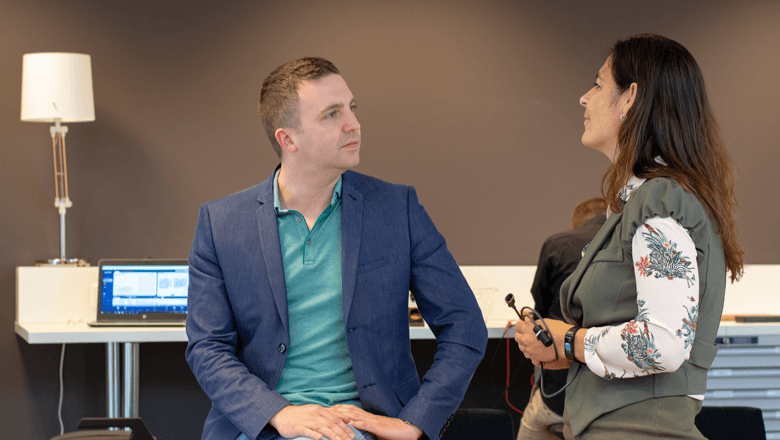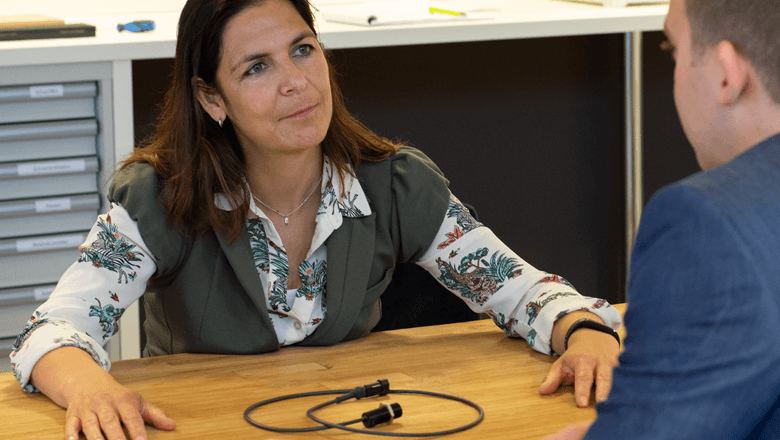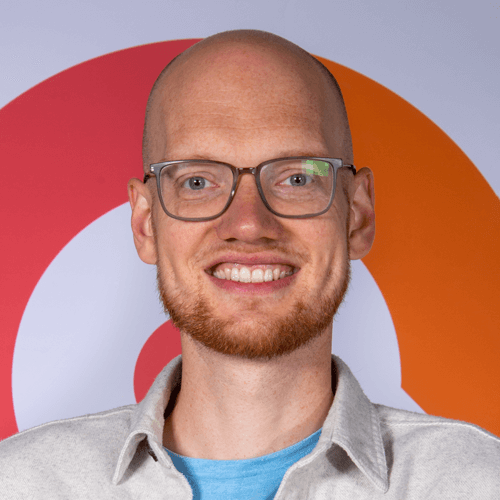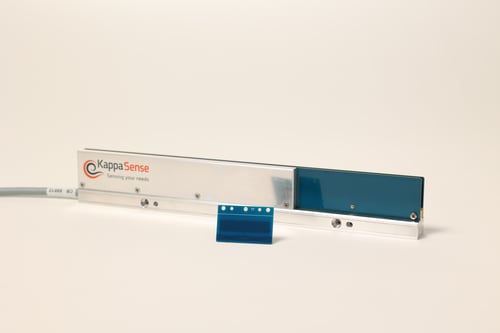The tension between Sales and Engineering

The interests of Sales and Engineering are sometimes quite different when working on a sensor integration project. This creates tension between our sensor experts. Where the Account Manager wants to offer flexibility to the customer, the Engineer sticks firmly to the processes in order to safeguard quality. Certainly in a growing organization such as Sentech, it is a challenge to find a balance in this situation. Do you recognize these dynamics?
Sentech is on the move. In recent years we have developed ourselves from a sensor supplier into a sensor integrator. “We have climbed up the value chain,” says Hermen Kobus, Sentech’s Operations Director. Herman’s department has eight sensor experts. For specific disciplines, such as mechanical or electronic design, he supplements his team with external experts.
We integrate the sensor solution that is most appropriate for the customer’s needs. As Kobus explains, “Even if a standard sensor is the best solution, we will recommend that. In such a case we don’t offer much added value. Yet, a focused sensor solution often fits the customer’s need better. Sometimes we even build a complete module. The sensor need of the customer is always paramount here. This, too, doesn’t have to be more expensive than standard sensors.”
Supplement limited engineering capacity
Because we are knowledgeable about new technologies, such as autonomous driving and the Internet of Things, we can respond to all sensor requests. Account Manager Marie-José Wolters adds: “Customer demands are becoming increasingly challenging. That’s why we take a broader view than sensor manufacturers, so that we know which technologies are available.”
Wolters continues, “We question the customer so that we know what they really need. Only then can we provide the best suitable sensor solution for the customer’s application. Due to our short lines of communication and our flexibility, we can also deliver smaller quantities. The capacity of the customer’s engineering is often limited. Here, our added value becomes evident – in offering the knowledge of our engineers,” says Wolters.

Sensor integration project with tight processes
Sentech has grown significantly in recent years, in both Sales and Engineering capacities. Kobus adds in this regard: “According to some of our customers, we are somewhat more structured. A few years ago, before we followed strict processes, we were more flexible. Then, the prototype was practically ready the next day. Now, after a growth spurt, our engineering capacity is more sparse. This requires us to identify the business case and determine whether we will make capacity available for it.”
Wolters is happy with the processes: “But they do have to work for us. It is not our intention to follow the processes at all costs, and then have to take a bypass in order to deliver more quickly.”
Customer interest vs. impact on the internal organization
“Sometimes the turnaround time for a sensor integration project is very long, which can clash with the customer’s expectations. Sometimes the customer expects the sensor solution to be delivered shortly after a decision. The customer expects this because, for example, promises have been made to him and his final customer. As an Account Manager, I try to help but I also realize what the impact will be for us internally. Especially the process from prototype to the production of a first series is often stressful,” according to Wolters.
Kobus adds, “Marie-José guards the customers’ interest, even if our sensor experts have to turn themselves inside out to meet that interest. That is part of her role as Account Manager. Moreover, we attach great value to customer intimacy, so I in Engineering also want to be there for the customer. In addition, I believe in the process and want to have everything arranged well internally at Sentech. It is my responsibility to ensure that our organization is not taxed any more than is responsible.”
The Operations Director adds: “There is always tension between the departments of Sales, Planning, Purchasing, Production and Engineering. But these healthy dynamics help us keep each other on the ball. The pitfall of Engineering is that we want to make a product even better, even though it is already good enough for the customer.”

Adjust process steps to the customer request
Each customer has their own expectations, which require different process steps. Wolters explains: “Sometimes we must follow the entire development process to be able to satisfy the customer’s request. For customers who work according to trial & error, we often eliminate several process steps. For them, speed is important.”
According to Kobus, what the ideal process looks like differs per sector. “For example, a development project in the automotive sector can take two years. But a high-tech organization, such as ASML, expects a perfectly functioning product within a few months. In the Agri sector, customers are used to a more practical way of working. They say, ‘We will test the product ourselves. If it doesn’t work well, we will adjust it.’ But that’s not possible at all in the semi-con and automotive sectors. There, the product must be good from the start. That is only achievable if we go through the process steps in an efficient manner.”
Balance between quality, costs and delivery time
According to Wolters, “Automotive customers would prefer to have 0 ppm errors. That means that not one product per million products may have an error. Other customers are satisfied with a ppm of 99. At 99 ppm, we don’t follow all of the process steps because that would be too expensive for the customer requirement. Moreover, we are then able to be more flexible and faster.”
Kobus emphasizes that Sentech never skips steps: “We must always find a balance between quality, costs and delivery time. We do this based on the expectations of the customer. After identifying the risks, we determine together which steps do we scale in order to go through the process more quickly. We call this ‘scale, don’t skip’.

Faster delivery by weighing risks
Advanced Product Quality Planning (APQP) is the foundation of our work processes. This product development method allows us to meet automotive standards while having the flexibility to deviate from the processes. In some cases, we decide on a bypass, relates the Account Manager.
“If a test tool is not ready yet, you can test the first series manually. This is less reliable than with a tool because the risk of errors is greater. But the customer is helped more quickly because manual testing is faster than waiting for the test tool.”
However, the idea is not to have manual testing result in the development of the test tool being put on the back burner. Kobus elaborates: “A bypass is fine, as long as you weigh the risks. Are we not forgetting anything, are there things that we must fix after the fact?” This is how Sales and Engineering remain engaged with each other about the project approach.
What does an Engineer’s working week look like?
The Engineer continues to look for the balance between customer intimacy and technical interests. This is also true for our Senior Project Engineers Johan and Ivo.
They will tell you about their work week in high tech. With some fifteen ongoing sensor issue projects, no work day is the same for them.
Just take a look at the work week of our Engineers!
This article appeared in Link Magazine no 3 2019 and was written by Hans van Eerden.




